About 51 species of insects and two species of mites belonging to 27 families under nine orders, along with snails and two species of millipedes, are known to damage Chilli crops both in the nursery and the main field. Among these pests, thrips, mites, aphids, and fruit borers are serious. In addition, some minor pests in certain tracts may occasionally become severe and cause considerable damage to the crop.
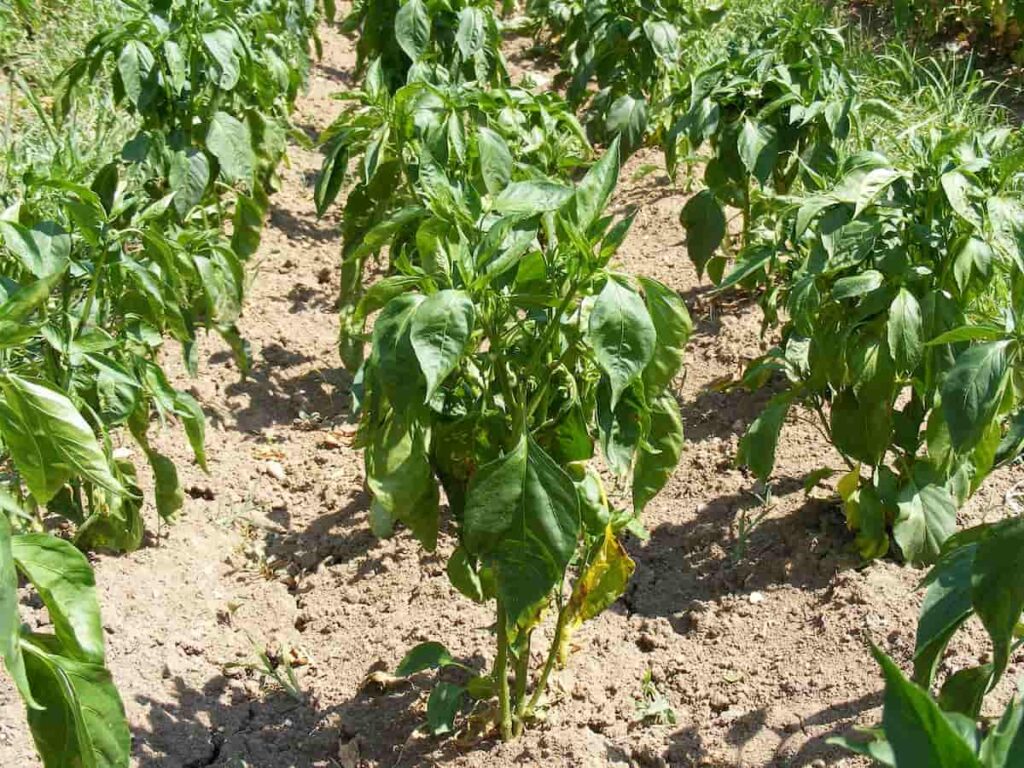
For example, an overall reduction in the yield of Chilli due to arthropod pests was up to 77 percent. The joint infestation of thrips and mites caused losses of up to 34 percent. The details regarding the symptoms and management of significant sucking pests have been discussed below.
Sucking pests in chilli crop
Aphids
Aphids are small, soft-bodied insects. All types are less than a tenth of an inch (3mm) long, but there are many different species, from the black bean aphid to the rose aphid or greenfly. In addition, they come in various colors, from white or grey to green and black. These Chilli aphids are small in size, but the damage caused by them is of great significance.
They are pear-shaped insects with long, thin tail-like appendages ranging from green to brown. The tiny insects are usually found in groups, and you may find some with wings – a sign that the colony is about to disperse onto new host plants.
Damage symptoms
- Appear on the tender shoots, leaves, and the lower surface of the leaves.
- Plants are reduced in vigor when the sap is sucked.
- Sooty mold is caused by secret sweet substances that attract ants. Sooty mold causes blackened pods to lose quality and fetch a low price.
- Additionally, aphids reduce yields directly and indirectly by spreading virus diseases.
Control and treatment
- Use 0.1% Dimethoate or Methyl demeton (2 ml per liter of water), 1.5 ml Monocrotophos or 1 g Acephate. Spray with alternate chemicals at ten days intervals till the end of the aphid population check.
- Add a few dish soap drops to a spray bottle, top it up with water and shake to dissolve. Spray the solution liberally over the plant.
- Try blasting small infestations of aphids off your plants with a jet of water from a hosepipe.
- The winged forms of aphids migrate rapidly between fields. Therefore, spraying should be carried out within a few days.
Mites
Yellow tea or broad mites are most common in Chilli and capsicum crops. Red mites are also common in these crops. The adults of mites are eight-legged, while the larvae are six-legged. Mites belong to the spider family and are yellow. They live on the underside of the leaves by webbing and feeding on the sap of the tissues. Infected leaves turn downwards, and the petiole becomes elongated under severe conditions. Symptoms also include a mottled appearance of yellow and green on the fruits.
In case you missed it: Chilli Varieties in India; Mirchi Varieties in India
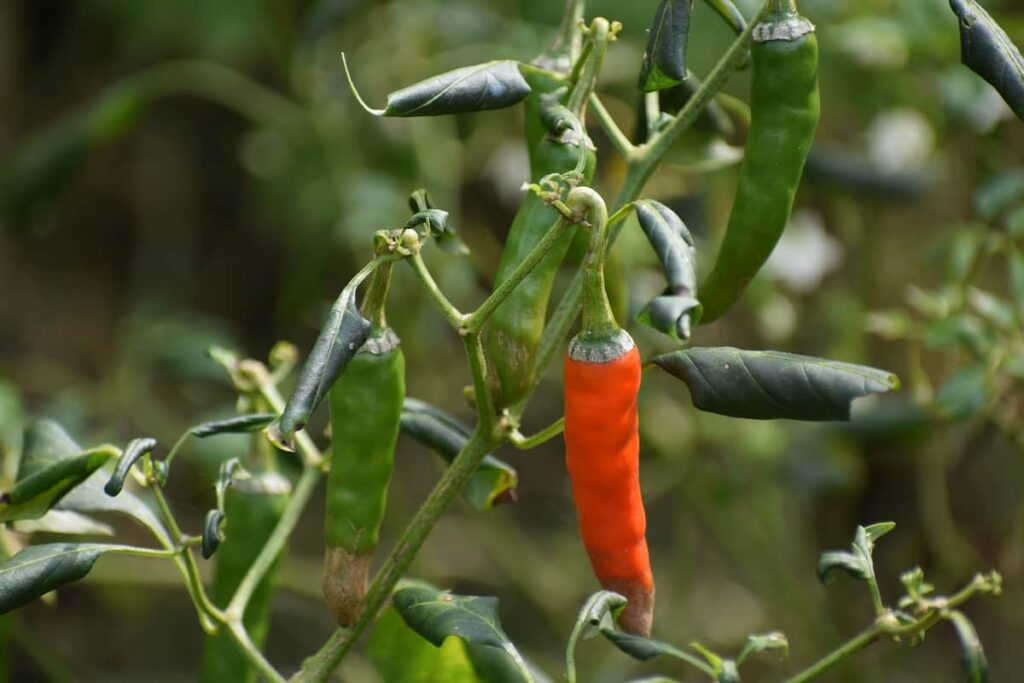
Symptoms
- Nymphs and adults suck leaf sap.
- Affected leaves develop an inverted boat shape along their margins.
- Petioles of leaves are elongated, and small leaves are serrated and bouncy.
- It turns dark gray, loses its leaf sheath, stops flowering, and reduces yields substantially.
- In severe cases, fruit walls become hard and white stripes appear.
Control and treatment
- Spray Phasalone 3ml/liter (Severe conditions), Wettable sulfur 3g/liter of water, or Dicofal 5ml/lit of water.
- Apply Wettable sulfur 50 WP at 4 kg in 500-750 L water per hectare
- Spray any below-listed insecticides with 500 -750 L water per hectare.
| Chemical compound | Dosage | Chemical compound | Dosage |
| Buprofezin 25 SC | 300-600 ml | Milbemectin 1 EC | 325 ml |
| Fenpyroximate 5 EC | 300-600 ml | Fenazaquin 10 EC | 1.25 L |
| Chlorfenapyr 10 SC | 750-1000 ml | Propargite 57 EC | 1.5 L |
| Hexythiazox 5.45 | 300-500 ml | Fenpropathrin 30 EC | 250-340 ml |
| Diafenthiuron 50 WP | 600 grams | Spiromesifen 22.9 SC | 400 g |
| Lambda cyhalothrin 5 EC | 300 ml | Dicofol 18.5 EC | 2 L |
| Ethion 50 EC | 1.5-2.0 L | Phosalone 35 EC | 1.5 L |
Thrips
Thrips are the sucking type of insects that infests the chill crops. This major pest on Chilli crops affects the plants throughout their life, starting from the nursery. Thrips also can transmit the leaf curl mosaic virus. These polyphagous pests cause harm to a wide range of crops also. They are hard to notice on the leaf because of their small size. They feed on the sap from the leaves and stems, resulting in silvery areas and black blotches. Recently the black thrips or the western thrips are causing severe damage. The thrips are often found on the flower-sucking sap and distort the fruit’s shape, size, quality, and yield.
Damage symptoms
- Adults and nymphs damage the crop, lacerate the leaf tissue, and suck the sap.
- Flowers, buds, and tender shoots are attacked. Consequently, the leaves become twisted and deformed, curling upward·
- Attacked plants are stunted, leaves are dropped, and fresh buds become brittle and dropdown.
- Severe infestations may make the leaf edges turn brownishly burnt. Leaf brittle, stunted plant growth and malformation of plant parts are common symptoms with a high rate of flower deformation.
Control and treatment
- Grow resistant varieties like G5, K2, X 235
- Intercrop with a green manure crop, Sesbania grandiflora (agathi), to provide shade which regulates the thrips population
- Do not grow Chilli after sorghum – more susceptible to thrips
- Do not follow Chilli and onion mixed crop as thrips attack both crops
- Sprinkle water over the seedlings to check the multiplication of thrips carbofuran 3G at 200g/ 40 square meter area in the nursery
- Dip the roots of seedlings in monocrotophos 36 WSC at 0.05% for 20 min. before
- transplanting
- Dust carbaryl 5 D 25 kg /ha in the early morning
- Spray any of the following insecticides with water 500 L/ha
| Chemical compound | Dosage | Chemical compound | Dosage |
| Imidacloprid 70 WS | 500-1000 grams | Fenpropathrin 30 EC | 250-340 ml |
| Imidacloprid 17.8 SL | 125-250 ml | Spinosad 45 SC | 160 ml |
| Emamectin benzoate 5 SG | 200 grams | Fipronil 5 SC | 800-1000 ml |
| Lambda cyhalothrin 5 EC | 300 ml | Thiacloprid 21.7 SC | 225-300 ml |
| Ethion 50 EC | 1.5-2.0 L | Dimethoate 30 EC | 500 ml |
| Methomyl 40 SP | 750-1125 grams | Methyl demeton 25 EC | 500 ml |
- For every spraying, change the pesticide and spray at fortnight intervals four weeks after transplanting.
- Encourage the activity of predaceous thrips: Scolothrips indicus and Franklinothrips, megalops in the field
Tobacco caterpillar
It is the larvae of Spodotpera litura that cause symptoms. Typical adult moths have grayish-brown bodies and variegated forewings with white wavy markings. They have white hind wings with brown lines along their margins and veins. On the upper leaf blades, females lay hundreds of eggs covered with golden brown scales. Hairless light-green larvae disperse quickly and feed gregariously on leaves after hatching.
The older larvae have dark spots on their flanks and somewhat clearer bellies. Three triangular black spots on each side interrupt two longitudinal yellow bands. Between these spots, an orange band runs dorsally. During the day, larvae take refuge in the soil and feed at night. A temperature range of 15°C to 35°C is ideal for larvae and adults, with a temperature of 25°C being optimum. The lower humidity and higher or lower temperatures reduce fertility and prolong the life cycle of these organisms.
In case you missed it: Chilli Seed Germination, Time, Temperature, Procedure
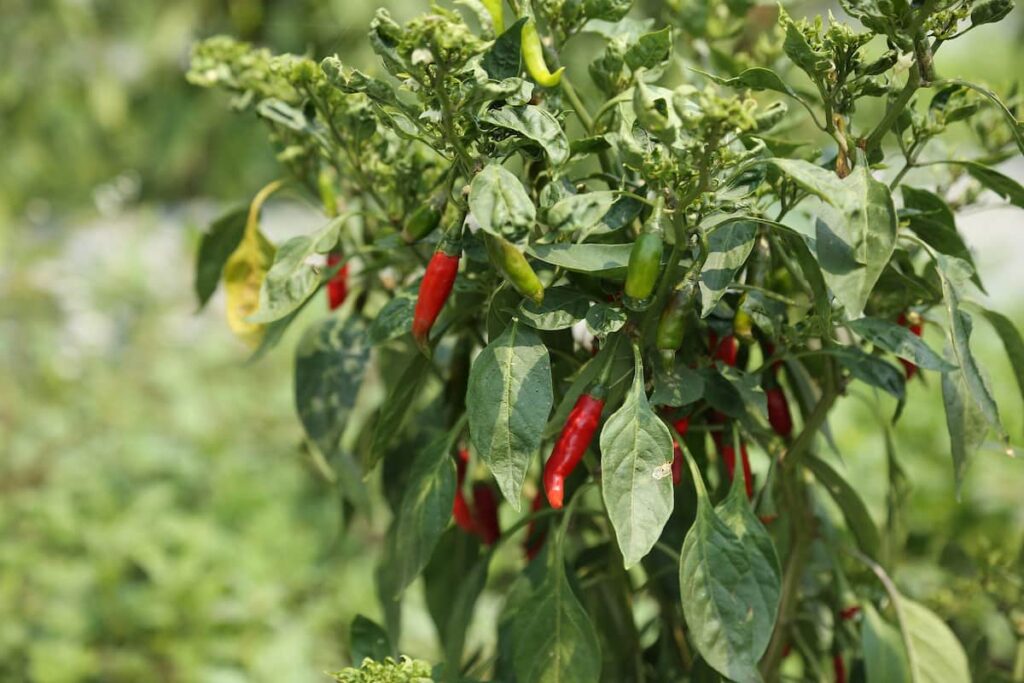
Damage symptoms
- In their early stages, pod borers are visible during the day and when they are nocturnal in habit. However, it is easy to control when they are seen in numbers on the same plant feeding on leaves and making small holes.
- Larvae scrape the leaf tissue, creating large, irregularly shaped holes. It can result in complete defoliation of the plant.
- Flower buds and pods are also attacked and show feeding holes.
- In lighter soils also, the roots become damaged. Due to extensive feeding, only petioles and branches are left behind.
- During the fruiting stage, the larva scrapes the fruits and feeds on them.
Control and treatment
- It is recommended to spray Chlorpyriphos 2.5ml/liter of water, Quinolphos 2ml/liter of water, Endosulphan 2ml or Carbaryl 3gm or Monocrotophos 2ml or Thiodicarb 1gm or Acephate 1g/liter of water.
- Pheromone traps (2/acre) should be placed in the field to attract male moths and determine pod borer intensity.
- The application of poison baiting with 5kg bran, 500 gms Jaggery, and 500 gms carbaryl or 500ml Monocrotophos or chlorpyriphos mixed with water in small pellets should be made in the evening times in the field. At the right times, larvae come out, eat and die, promising against grown-up caterpillars that withstand contact insecticides as sprays.
- Synthetic pyrethroids are to be considered if conventional insecticides fail to control pod borers.
- It is not recommended to spray synthetic pyrethroids more than twice, as they can trigger a flare-up of sucking pest complexes.
Whitefly
Whitefly feed on the plant’s sap which is why they tend to attack the fresh young growth of plants. Left unchecked, they multiply rapidly and cause lasting damage to the host plants, often stunting their development. The whitely also secrete a sticky residue on the plants, which then attracts dust and muck and usually causes problems with fungal growths on the leaves.
Damage symptoms
- The nymphs and adults suck sap from leaves and excrete honeydew, which contaminates the lint.
- Sooty mold coats the leaves, making them appear sickly.
- The leaf curl virus is also transmitted by it.
In case you missed it: Organic Chilli Cultivation (Peppers/Mirchi), Farming Process
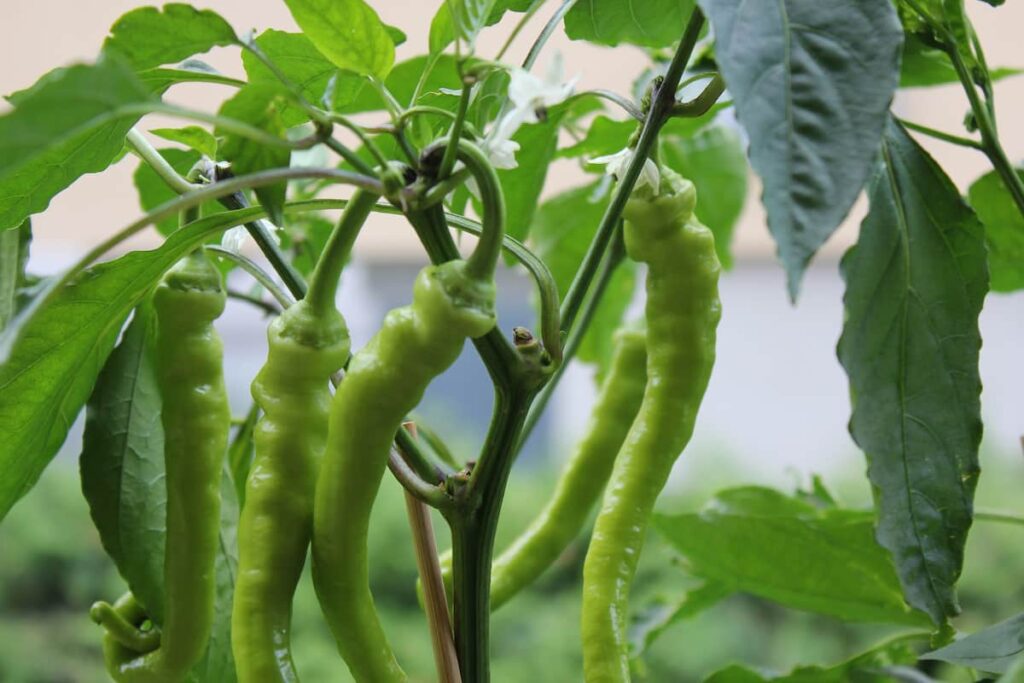
Control and treatment
- Yellow sticky traps coated with grease and sticky oils can be used to attract and control whiteflies.
- Apply Triazophos or Prophanophos 2 ml/liter to the affected area.
- The use of Synthetic Pyrethroids increases the number of whiteflies.
- Spraying Neem Seed Kernel Extract 5% (50 kg) and Neem oil at 5 ml/liter is recommended. It can also be combined with a recommended dose of insecticide (at 2 ml/liter) or 2 kg of fish oil rosin soap in 40 liters of water.
- During early stages, spray methyl demeton 25 EC at 500 ml (500 lit. of spray fluid/ha).
- During the mid and late stages, spray ethion 50 EC at 1.0 lit/ha and Acephate 75 SP at 1.30 kg/ha.
Root grub
Both adults and larvae can damage plants or trees by feeding on the roots. The adults are dark brown, about 20 mm long, and 8 mm wide. Within three to four days after the onset of rain, they emerge from the soil, fly short distances, and feed on the surrounding plants. After feeding, they reenter the soil to hide and lay their eggs. Female lays 20-80 white and roundish eggs singly at a depth of 5-8 cm in the soil.
The larvae are whitish-yellow, translucent, and about 5 mm long. The fully grown grubs are stout with strong mandibles. Their head is yellowish, and their white colored body is fleshy and ‘C’ shaped. They feed on organic matter for a few weeks and then on fine rootlets and pods. These grubs also feed on the roots of crops such as sugarcane, sorghum, maize, red gram, or pearl millet.
Damage symptoms
- In addition to eating away the nodules and fine rootlets, grubs may also wrap the main root, ultimately killing the plants.
- Plants that have been attacked can easily be identified and pulled out.
- The root grubs generally prefer young plants, and their damage can be seen until October.
- At night the beetles feed on foliage and may completely defoliate the plant.
Control and treatment
- 100 kg neem cake per acre should be applied along with well-rotten farmyard manure.
- 20 kg of 2% Folidol dust should be applied before sowing (July-August).
- During severe infestations, apply ten kilograms of Phorate granules per acre, thoroughly mixed in the soil to a depth of 15 centimeters.
- Control white grubs by treating seeds with Phorate 10G or Quinalphos 5G at 50 grams of active ingredient per kilogram.
- Seeds were treated with granular insecticides using a slurry of clay. In an earthen pot, this slurry was mixed with the required quantity of granular insecticide, then shaken to coat the seeds evenly.
- After the treatment, the seeds were dried in the shade.
- Applying insecticides in the standing crop to control white grubs – Carbaryl 50% WP 0.2% Or Isofenphos 5G at 25kg/ha. Or Quinalphos 25 E.C 0.02%
- Plant products like mustard seed powder at 60 kg/acre to control white grubs or Neem seed powder at 80 kg/acre.
- Using plant products provides a wide range of safety to the ecosystem, keeping the crop from the Phytotoxic effect, residual toxicity, and pollution.
In case you missed it: Top 18 Steps to Boost Chilli/Pepper Yield: How to Increase Production, Quality, and Tips
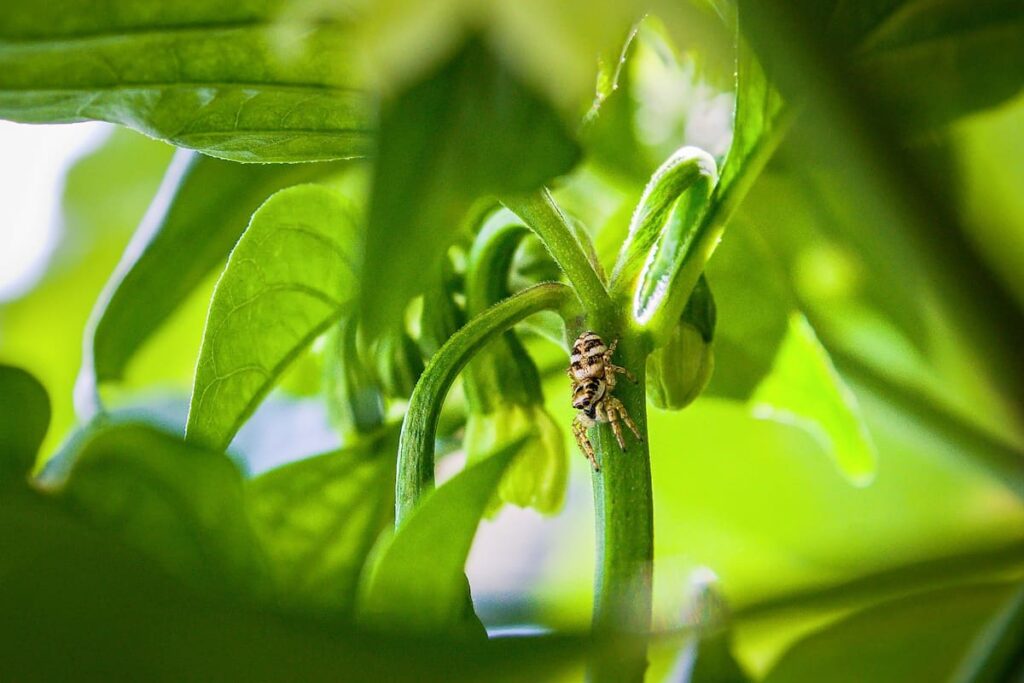
Ragi cutworm
The greasy cutworms come out at night, cut the seedlings at ground level, and eat tender leaves. Larva: Black with pale mid-dorsal stripes; head pale brown, skin with coarse granules interspersed with small granules. Adults are forewing pale brown with dark purplish brown along the margin and towards the base; hind wing white with a brown tinge.
Damage symptoms
- It mostly damages the leaves, flowers, and tender pods. Damage to matured pods is minimum.
- In severe cases, the insect causes damage to twigs also. But, again, it is because it feeds the fruit at the base of the calyx.
Control and treatment
- Weeds that belong to the Amaranthus category act as alternate hosts. Hence, the removal of such weeds reduces the infestation.
- Collect the egg masses and destroy them.
- It webs the leaves and hides inside during day time. Hence, effective control spraying operations should be carried out in the evening.
- Spray Chlorpyriphos 3ml/liter of water or Monocrotophos 1.6 ml/liter of water or Quinalphos 2ml/liter of water to control this insect.
Mealybugs
In Chilli crops, mealy bugs are also common sucking pests. Mealybugs are oval, wingless insects that live in warm or temperate climates. A thin layer of mealy wax covers their bodies, making them cottony look. Their long, piercing, and sucking mouthparts (stylets) penetrate plant tissues and extract sap. Symptoms are caused by the toxic substances they inject into plants while feeding. Alternative hosts include eggplant and sweet potato, as well as many weeds. Warm temperatures and dry weather favor their life cycle and symptoms.
In case you missed it: How to Control Western Flower Thrips in Chilli Crop: Identification, Fact Sheet, Chemical and Biological Management
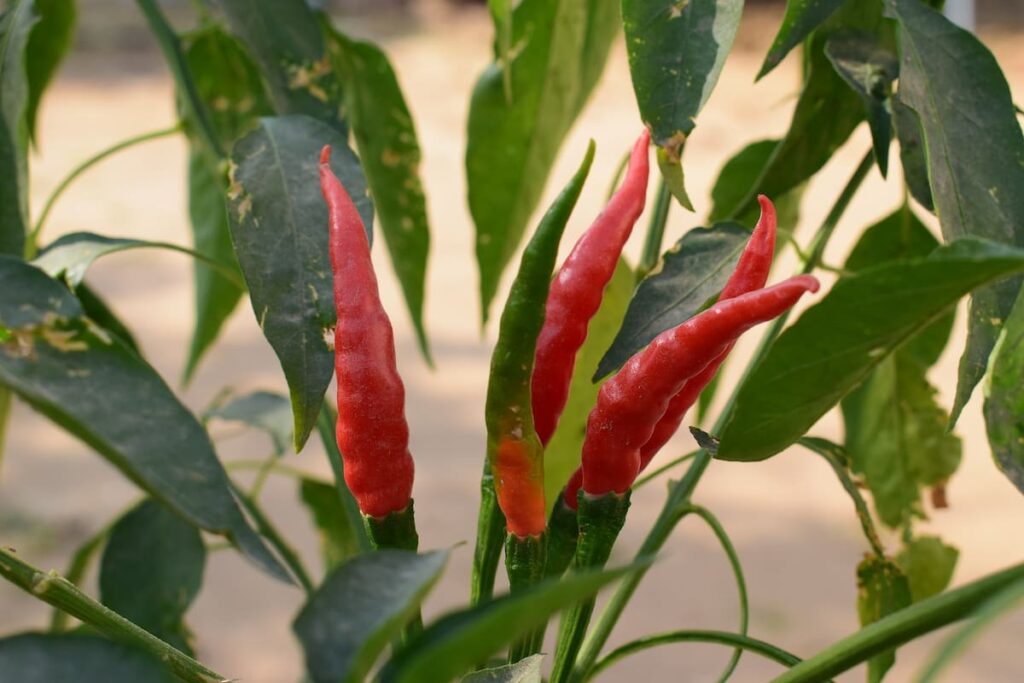
Damage symptoms
- Mealybugs are found in clusters under the surface of the leaves with a waxy secretion.
- Infestations can lead to the yellowing and curling of young leaves, plants’ stunted growth, and fruit’s early fall.
- The bugs excrete honeydew during sap-sucking, making the tissues sticky and prone to colonization by opportunistic bacteria and fungi.
- Fruits are susceptible to attack and may become deformed or completely coated with wax secretions. The honeydew may also attract ants, spreading the pest to other plants.
- Deformed or distorted leaves are less likely to occur in older leaves.
Control and treatment
- The first sign of a mealybug infestation should be treated with oil or spirit smeared on cotton buds.
- Insecticidal soap can be sprayed on plants. In addition, Neem oil or pyrethrins should be sprayed on nearby plants to prevent the spread of the population.
- The natural antagonists are the green lacewing, parasitoid wasps, hoverflies, ladybird beetles, mealybug destroyer, and predatory butterfly Spalgis epius.
- Due to their waxy layers and fibers, mealybugs are resistant to adverse environmental conditions. Therefore, it is also possible to control mealybugs by spraying foliar solutions containing imidacloprid, acetamiprid, and chlorpyrifos.
Conclusion
The above-discussed pests can cause curly leaves, deformed fruit, withering, browning, and drying of the entire crop. In addition, due to pest infestation, sucking pests act as vectors for viral diseases and can lead to severe yield losses by sucking the cell sap from crops.
- Types of Pesticides Used in Agriculture: A Beginner’s Guide
- Economical Aquaculture: A Guide to Low-Budget Fish Farming
- 15 Common Planting Errors That Can Doom Your Fruit Trees
- How to Make Houseplants Bushy: Effective Tips and Ideas
- Innovative Strategies for Boosting Coconut Pollination and Yield
- Pollination Strategies for Maximum Pumpkin Yield
- The Complete Guide to Chicken Fattening: Strategies for Maximum Growth
- Natural Solutions for Tulip Problems: 100% Effective Remedies for Leaf and Bulb-Related Issues
- Revolutionizing Citrus Preservation: Towards a Healthier, Greener Future
- Natural Solutions for Peony Leaf and Flower Problems: 100% Effective Remedies
- Maximizing Profits with Avocado Contract Farming in India: A Comprehensive Guide
- Natural Solutions for Hydrangea Problems: 100% Effective Remedies for Leaf and Flowers
- The Ultimate Guide to Choosing the Perfect Foliage Friend: Bringing Life Indoors
- From Sunlight to Sustainability: 15 Ways to Use Solar Technology in Agriculture
- The Ultimate Guide to Dong Tao Chicken: Exploring from History to Raising
- The Eco-Friendly Makeover: How to Convert Your Unused Swimming Pool into a Fish Pond
- Mastering the Art of Delaware Chicken Farming: Essentials for Healthy Backyard Flocks
- 20 Best Homemade Fertilizers for Money Plant: DIY Recipes and Application Methods
- How to Craft a Comprehensive Free-Range Chicken Farming Business Plan
- Brighten Your Flock: Raising Easter Egger Chickens for Beauty and Bounty
- How to Optimize Your Poultry Egg Farm Business Plan with These Strategies
- Subsidy for Spirulina Cultivation: How Indian Government Schemes Encouraging Spirulina Farmers
- Ultimate Guide to Raising Dominique Chickens: Breeding, Feeding, Egg-Production, and Care
- Mastering the Art of Raising Jersey Giant Chickens: Care, Feeding, and More
- Ultimate Guide to Raising Legbar Chickens: Breeding, Farming Practices, Diet, Egg-Production
- How to Raise Welsummer Chickens: A Comprehensive Guide for Beginners
- How to Protect Indoor Plants in Winter: A Comprehensive Guide
- Ultimate Guide to Grow Bag Gardening: Tips, Tricks, and Planting Ideas for Urban Gardeners
- Guide to Lotus Cultivation: How to Propagate, Plant, Grow, Care, Cost, and Profit
- Agriculture Drone Subsidy Scheme: Government Kisan Subsidy, License, and How to Apply Online
- Ultimate Guide to Raising Araucana Chickens: Breed Profile, Farming Economics, Diet, and Care
- Bringing Hydroponics to Classroom: Importance, Benefits of Learning for School Students
- Ultimate Guide to Raising Polish Chickens: Breed Profile, Farming Economics, Diet, and Care
- Ultimate Guide to Raising Australorp Chickens: Profile, Farming Economics, Egg Production, Diet, and Care
- Silkie Chicken Farming: Raising Practices, Varieties, Egg Production, Diet, and Care
- Sussex Chicken Farming: Raising Practices, Varieties, Egg Production, Diet and Care